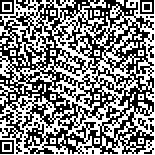| 摘要: |
| 采用相对丰度、种类丰富度、多样性和均匀度以及相似性指数, 结合丰度生物量比较曲线、等级聚类和生物与环境相关分析等多元统计方法对贻贝养殖和泥地生境中的鱼类组成、群落时空格局及其与环境因子间的关系作了比较研究。结果在两生境共采集鱼类41 种, 其中MF 为35 种, SB 为25 种。MF 中以皮氏叫姑鱼(Johnius belangerii)和小黄鱼(Larimichthys polyactis)为代表的石首鱼科鱼类的优势度皆高于同期的SB, 且褐菖鲉(Sebastiscus marmoratus)和星康吉鳗(Conger myriaster)成为MF 的季节性优势种。但鲬(Platycephalus indicus)和黄鮟鮟(Lophius litulon)等泥地优势种在MF 却较为少见。单变量分析表明两生境间各季度种类组成中等不相似。春夏季MF 站位的群落丰度密度和物种多样性比SB高, 但两生境间各指标并无显著差异。多变量分析显示3 个站位的群落格局皆有显著的季节变化, 且2生境间群落组成差异明显。ABC 分析揭示幼小鱼类的数量优势在MF 站位要比SB 更明显, 群落稳定性高于后者。BIOENV 分析显示溶解氧皆为两生境鱼类群落组成的最大相关因子。研究表明, 相对于同期的泥地生境, 贻贝养殖对鱼类群落结构及其多样性并无显著影响, 但养殖活动对石首鱼科鱼类和一些趋礁鱼类的种群可能起到了积极的养护作用, 同时也为幼小鱼类提供了更多的人工庇护所。 |
| 关键词: 贻贝养殖 泥地 鱼类群落 鱼类多样性 人工生境 |
| DOI:10.11759/hykx20140827001 |
| 分类号: |
| 基金项目:国家自然科学基金项目(41176110); 上海高校青年教师培养资助计划(ZZhy12009) |
|
| Study of benthic fish community structure in mussel farming habitat of Ma’an Archipelago |
|
|
| Abstract: |
| In order to study the ecological effects of mussel farming on natural benthic fish community, fishes were collected monthly using multi-mesh trammel nets from mussel farming (MF) and soft bottoms (SB) habitats in southern Lühua, Ma’an Archipelago. Univariate indices such as relative abundance, species richness, species diversity and similarity were compared. Multivariate analysis such as abundance and biomass comparison (ABC) curve, cluster analysis and BIOENV were also used for comparison between MF and SB habitats. A total of 41 species were identified (35 species in MF and 25 in SB). Much more taxa were found in MF compared by number of species. Sciaenidae fish such as Johnius belangerii and Larimichthys polyactis showed stronger dominance degree in MF than that in SB habitat. Sebastiscus marmoratus and Conger myriaster became seasonal dominant fish in MF rather than in SB habitat. However, dominant fish from SB habitat like Platycephalus indicus and Lophius litulon can rarely be collected in MF habitat. Univariate comparisons indicated that similarity of species composition between MF and SB habitat was at media-dissimilarity level. Species richness and diversity as well as evenness were higher in MF than those in SB habitat in spring and summer. However, no significant differences of those indices were observed between MF and SB habitats during all seasons. Multivariate analysis revealed that fish community patterns were differed not only among seasons but also between habitats. Much more small and juvenile fishes were collected from MF than SB habitat and community structure appeared to be more stabilized in MF. BIOENV revealed that dissolved oxygen (DO) was the largest factor in both of the two habitats. Our study suggests that mussel farming may act as a population enhancement tool for some Sciaenidae fish as well as juvenile rocky fish, although no significant effects on fish community structure and species diversity were found. In addition, it also provides extra shelters for small and juvenile fishes. |
| Key words: mussel farms soft bottom fish community fish diversity artificial habitat |
